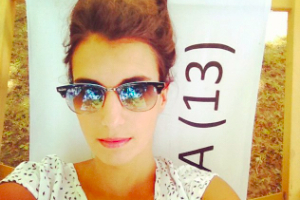Search
To search for an exact match, type the word or phrase you want in quotation marks.
A*DESK has been offering since 2002 contents about criticism and contemporary art. A*DESK has become consolidated thanks to all those who have believed in the project, all those who have followed us, debating, participating and collaborating. Many people have collaborated with A*DESK, and continue to do so. Their efforts, knowledge and belief in the project are what make it grow internationally. At A*DESK we have also generated work for over one hundred professionals in culture, from small collaborations with reviews and classes, to more prolonged and intense collaborations.
At A*DESK we believe in the need for free and universal access to culture and knowledge. We want to carry on being independent, remaining open to more ideas and opinions. If you believe in A*DESK, we need your backing to be able to continue. You can now participate in the project by supporting it. You can choose how much you want to contribute to the project.
You can decide how much you want to bring to the project.

Crossing Regent Street with its corresponding multitudes in full pre-Christmas spirit on a Saturday afternoon is not an easy task. Having passed by numerous restaurants full of tourists, I find a discreet doorway with a plaque that confirms that I am in the right place. I call on the interphone and they invite me up to the first floor. The door is open but there is nobody there, just a very dark room that seems to be empty. The total isolation of my new location is a dramatic contrast to the recently experienced hubbub outside.
The characteristics that define the work of Cinthia Marcelle encompass concepts such as repetition, precision and concretion in the execution of her videos and performances. The video that is the protagonist of the show, “Automóvel”, features the constant flow of vehicles on a two-way road, on a day that could have been taken from anybody’s life. After various shots where cars enter and exit the scene in both directions, at different types of rhythm, their proprietors transform into slaves and begin to push them. Condemned to pushing, they bump into the darkness of the night, where an orchestra of horns and intermittent lights interprets the most chaotic and poetic scene of the work, to end by fading into black.
The idea that sparks the myth of Sisyphus is not just latent in the representation of the video “Automóvel”, but also in the installation of photographs that accompanies the show in the adjoining room of the English location of the gallery. The documents arranged in the form of diptychs show four sequences where, in each case, the first image exhibits a recently exploded smoke bomb and the second how it dissipates, evaporating into the atmosphere. As occurs in the first piece of the exhibition, where the acoustic contamination ends up overwhelming the spectator, in the environmental contamination represented through these small actions, captured in instants, the idea of the cycle, the circle and repetition is present through the use of narration in the image but also through the action/representation of an event that is reinforced through it’s very absence.
Likewise, the work of Cinthia possesses a temperament impregnated with irony where the absurd is presented with the appearance of certainty. It is no coincidence that this happens, as paradox is one of the concepts most linked to performance, a method used by the artist, along with photography and video, to transform her ideas into art. Born in 1974 in Belo Horizonte (Brazil), it is inevitable to think about the possible references that Marcelle might have absorbed, between the experiences of Flávio de Carvalho and the happenings of the constructivist movement known as Grupo Frente, as well as the later Neoconcretism of artists such as Lygia Clark and Hélio Oiticica. These links can be appreciated through the use that the artist makes of the demonstration in some of her performances. On occasion, Marcelle has borrowed the words of Cildo Meireles to define her more performative work in which people “enter into the circuit” and “make noise”. Cildo Meireles also declared that: “in a certain way, you become political, when you have no way of being poetic. I believe that human beings prefer undoubtedly to be poetic.” [[Volumen 10 Cildo Meireles, by Cildo Meireles, with texts by Bartomeu Mari and Nuria Enguita, Alias, Ciudad de México, 2009, 208 pp.]] Cinthia Marcelle manages both.

Laura Vallés focuses her attention on these cracks that open up in contemporary society, leaving a space where on occasions there is only room for art. The study of the representation of landscape and its political use in the photographic language is the subject that occupies the most time in her recent investigations. Reading, writing, teaching and cultural production are the tools of her trade. She is currently combining her work as an editor at Editorial Concreta, with the development of her doctoral thesis in Britain.
"A desk is a dangerous place from which to watch the world" (John Le Carré)